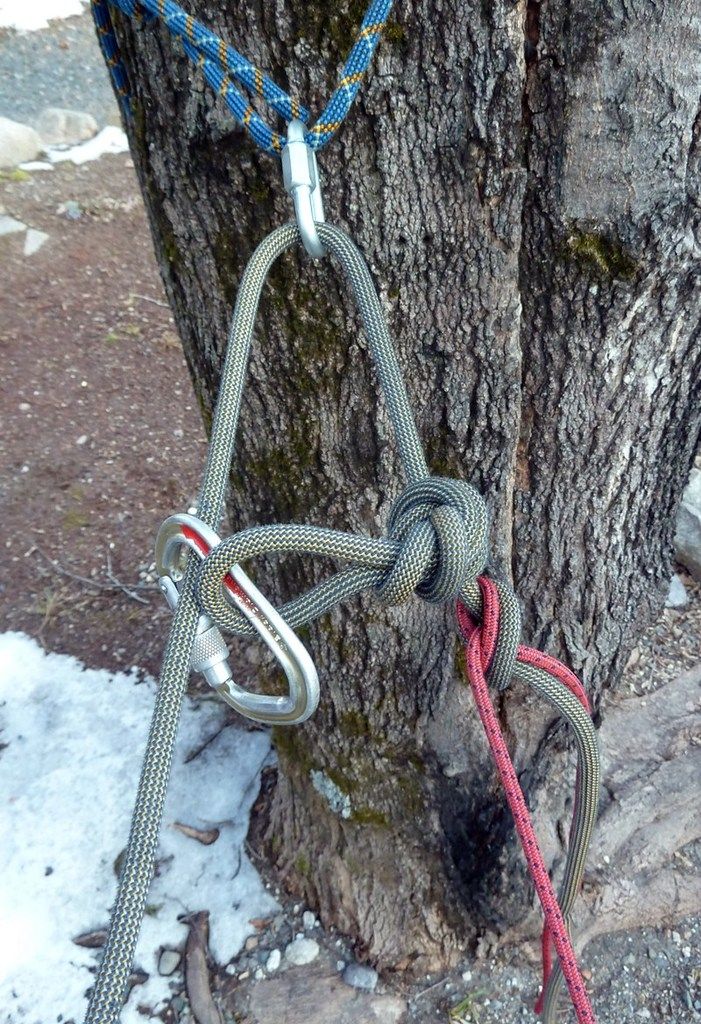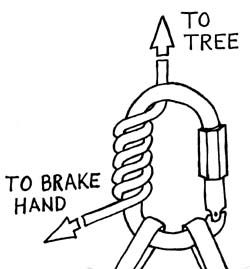If I were gonna rappell down my tree there's no way I'd carry a double length of main line. No need to carry the weight. I'd carry a single length of main line and an equal length of 2mm accessory cord. There's a slick way to rig a rope for single line rappell but the rope is retrievable from the ground. See pic below for how to rig this way.
Then all I'd need was a length of sacrificial rope or webbing and a threaded chain link or decending ring to anchor on the tree or limb. If it was a tree I hunted out of frequently I'd make an anchor out of log chain and a threaded chain link which would be safe to anchor to for many years to come.

If you want advice the knot I would tie for the loop would be an alpine butterfly.
To connect the 2mm to the main line...I'd tie an overhand knot in the end of the main line. Then I would thread the 2mm through the overhand on the main line then take the 2mm and tie a barrel knot around the main line.
This technique may be old news around here....I dunno but recently I have read where several of you guys mentioned double line rappelling out of the tree.
This trick will save you weight and bulk with your gear.
Hope it helps someone.
-Umbra
Then all I'd need was a length of sacrificial rope or webbing and a threaded chain link or decending ring to anchor on the tree or limb. If it was a tree I hunted out of frequently I'd make an anchor out of log chain and a threaded chain link which would be safe to anchor to for many years to come.

If you want advice the knot I would tie for the loop would be an alpine butterfly.
To connect the 2mm to the main line...I'd tie an overhand knot in the end of the main line. Then I would thread the 2mm through the overhand on the main line then take the 2mm and tie a barrel knot around the main line.
This technique may be old news around here....I dunno but recently I have read where several of you guys mentioned double line rappelling out of the tree.
This trick will save you weight and bulk with your gear.
Hope it helps someone.
-Umbra


